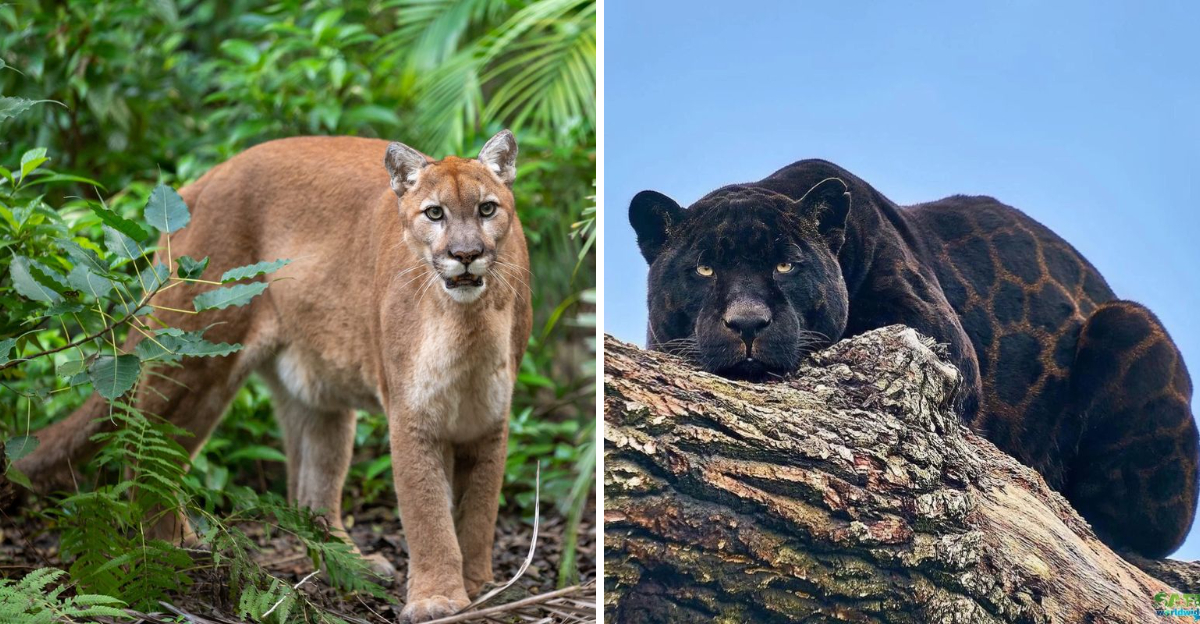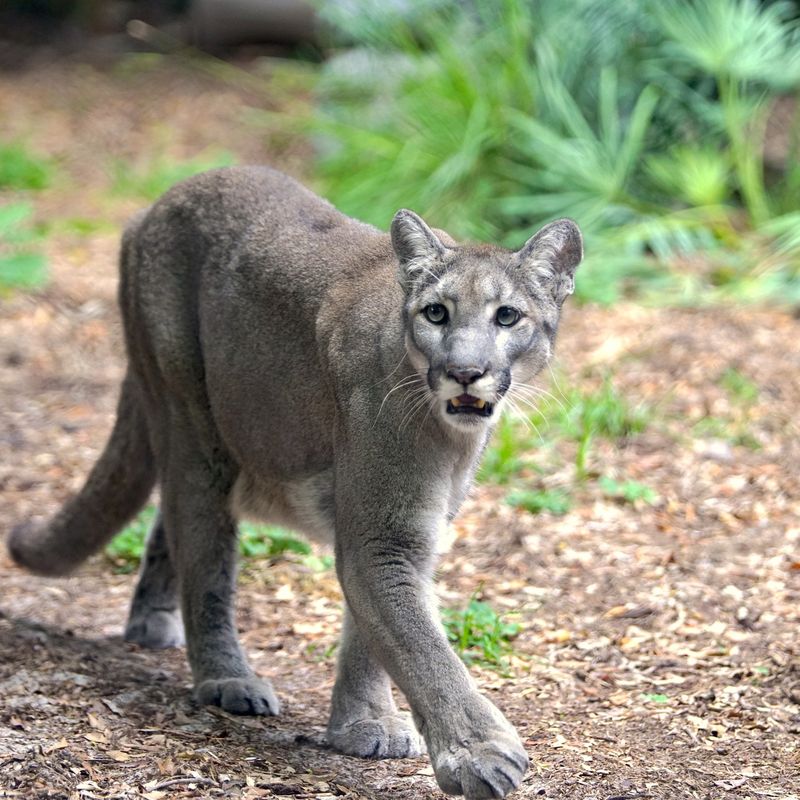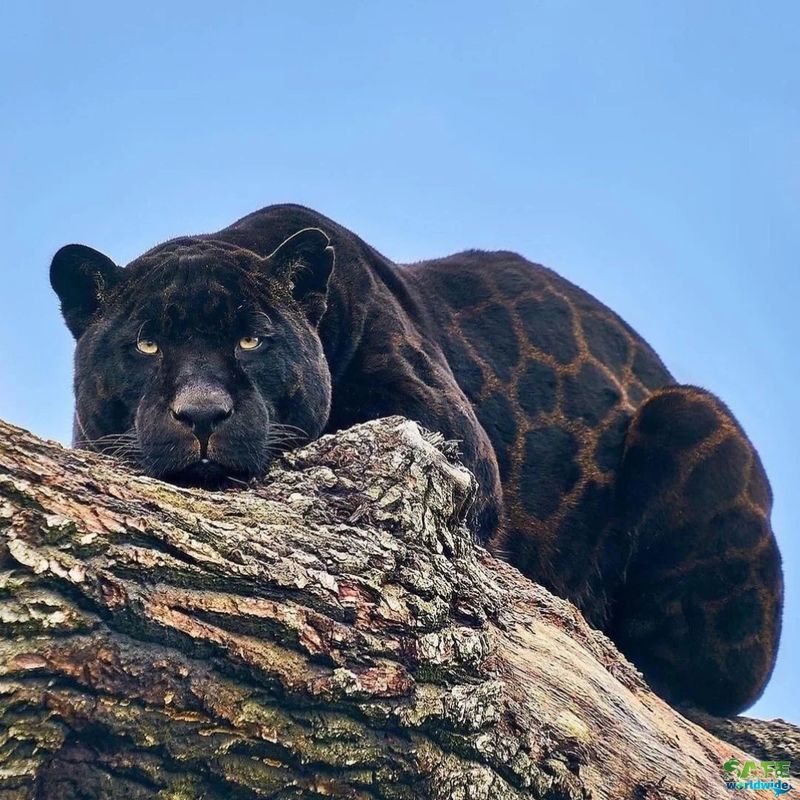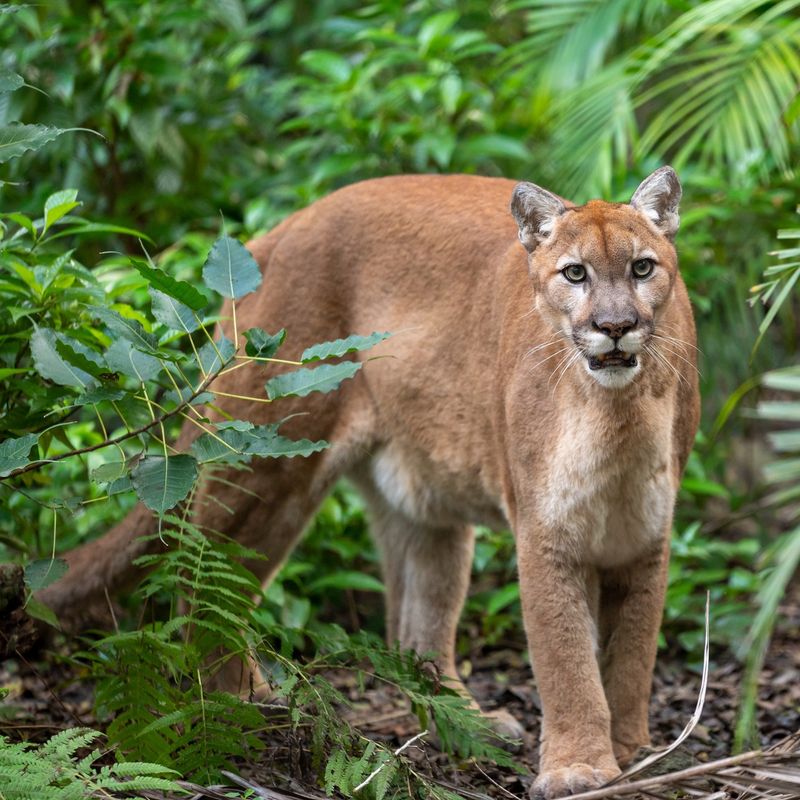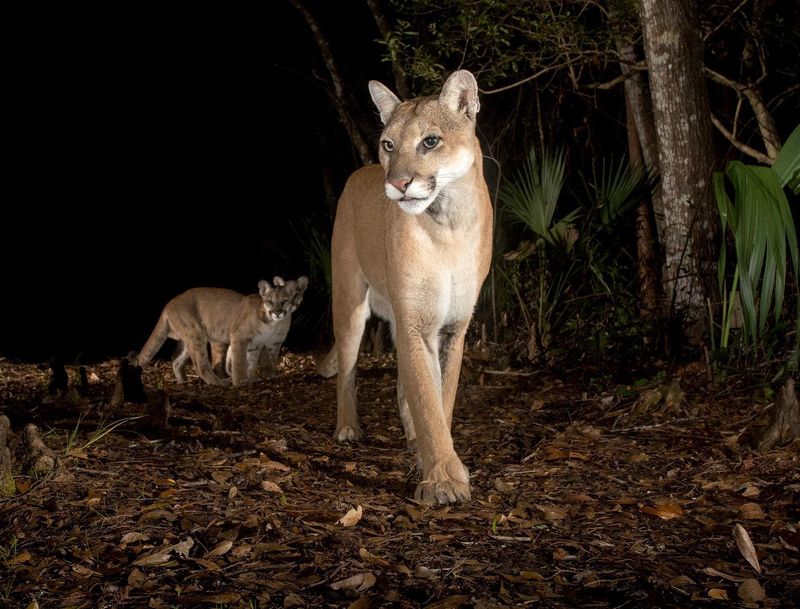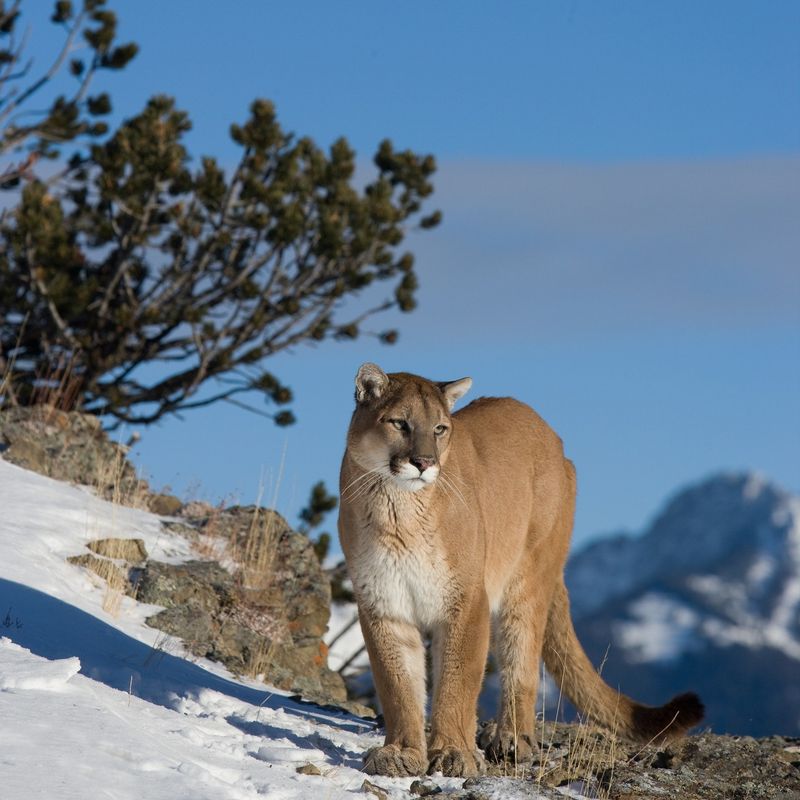📖 Table of Content:
They slip through the shadows of America’s forests and mountains—silent, powerful, and wrapped in mystery. Depending on where you live, you might call them cougars, mountain lions, pumas, or panthers. But are these names describing different cats… or just one master of disguise?
Spoiler: the truth is wilder than you think.
For decades, myths and misconceptions have blurred the lines between fact and folklore. Is there really such a thing as a black panther in the U.S.? Are Florida panthers a different species altogether? Why do some of these cats have crooked tails or cowlicks?
It’s time to set the record straight. From tangled names and eerie sightings to surprising science and conservation efforts, we’re diving deep into the secret world of one of North America’s most legendary predators.
1. Same Species, Different Names
Surprise! Cougars and panthers aren’t different animals at all in North America. They’re actually the same species (Puma concolor), just with different regional nicknames. This magnificent cat holds the Guinness World Record for the animal with the most names—over 40 in English alone!
In the eastern United States, people traditionally called them panthers, while western regions preferred cougar or mountain lion. Native Americans had their own names, too, like ‘puma’ and ‘catamount.’ The confusion stems from our human tendency to name things differently across regions.
Scientists settled on ‘puma’ as the official name, though ‘cougar’ remains most popular in everyday conversation. When someone mentions a Florida panther, they’re talking about the same species as a California mountain lion.
2. The Black Panther Connection
When most people picture a ‘panther,’ they imagine a sleek, black cat prowling through the jungle. This isn’t wrong—but it’s not a unique species! Black panthers are actually leopards or jaguars with a genetic mutation called melanism that turns their coat black.
Melanism works like a natural camouflage in dense forests. Look closely at a black panther in sunlight and you’ll spot their signature rosette patterns hiding beneath that midnight coat. Jaguars (in Central and South America) and leopards (in Africa and Asia) can both exhibit this striking color variation.
Notably, confirmed cases of black cougars don’t exist in scientific literature. When people claim to see black cougars in North America, they’re likely spotting other animals or regular cougars in low light.
3. Geographic Range and Habitat Differences
Cougars once roamed nearly all of the Americas, from Canada to Argentina—the largest range of any wild mammal in the Western Hemisphere! Today, their territory has shrunk dramatically, especially in eastern North America, where they were declared extinct (except in Florida) by the U.S. Fish and Wildlife Service in 2011.
The Florida panther represents the last breeding population east of the Mississippi River. Their habitat consists primarily of swamps and forests in southern Florida, while western cougars adapt to diverse environments including mountains, deserts, and forests.
Western populations remain relatively stable compared to their eastern cousins. Recent evidence suggests cougars are slowly expanding eastward again, with occasional confirmed sightings in midwestern states signaling a possible comeback.
4. Physical Differences Between Populations
While cougars and panthers are the same species, geographic isolation has created subtle physical differences between populations. Florida panthers tend to be smaller and have distinctive features like a crooked tail and a cowlick of fur on their backs—traits that emerged from inbreeding in their small, isolated population.
Western cougars typically weigh 140-200 pounds for males, while Florida panthers average about 130 pounds. Their paws tell different stories, too—western cougars often develop larger paws for navigating snowy terrain, while Florida panthers have adapted to swampland.
Genetic rescue efforts began in the 1990s when eight female Texas cougars were released in Florida to diversify the panther gene pool. This intervention helped reduce harmful genetic traits and increased the population from just 20-30 cats to around 200 today.
5. Conservation Status and Future Outlook
The Florida panther remains one of America’s most endangered mammals, classified as critically endangered, with approximately 120-230 adults surviving today. They face constant threats from habitat loss, vehicle collisions (their #1 cause of death), and genetic challenges despite conservation efforts.
Western cougar populations fare better overall but face their own challenges. Several states still permit cougar hunting, and habitat fragmentation continues to isolate populations. Climate change threatens to reshape their habitat and prey availability across North America.
Hope exists in conservation success stories like the Florida panther’s modest population increase and evidence of cougars naturally returning to former territories. Their future depends on wildlife corridors, road crossing structures, and public education about coexisting with these magnificent cats that help maintain healthy ecosystems.
